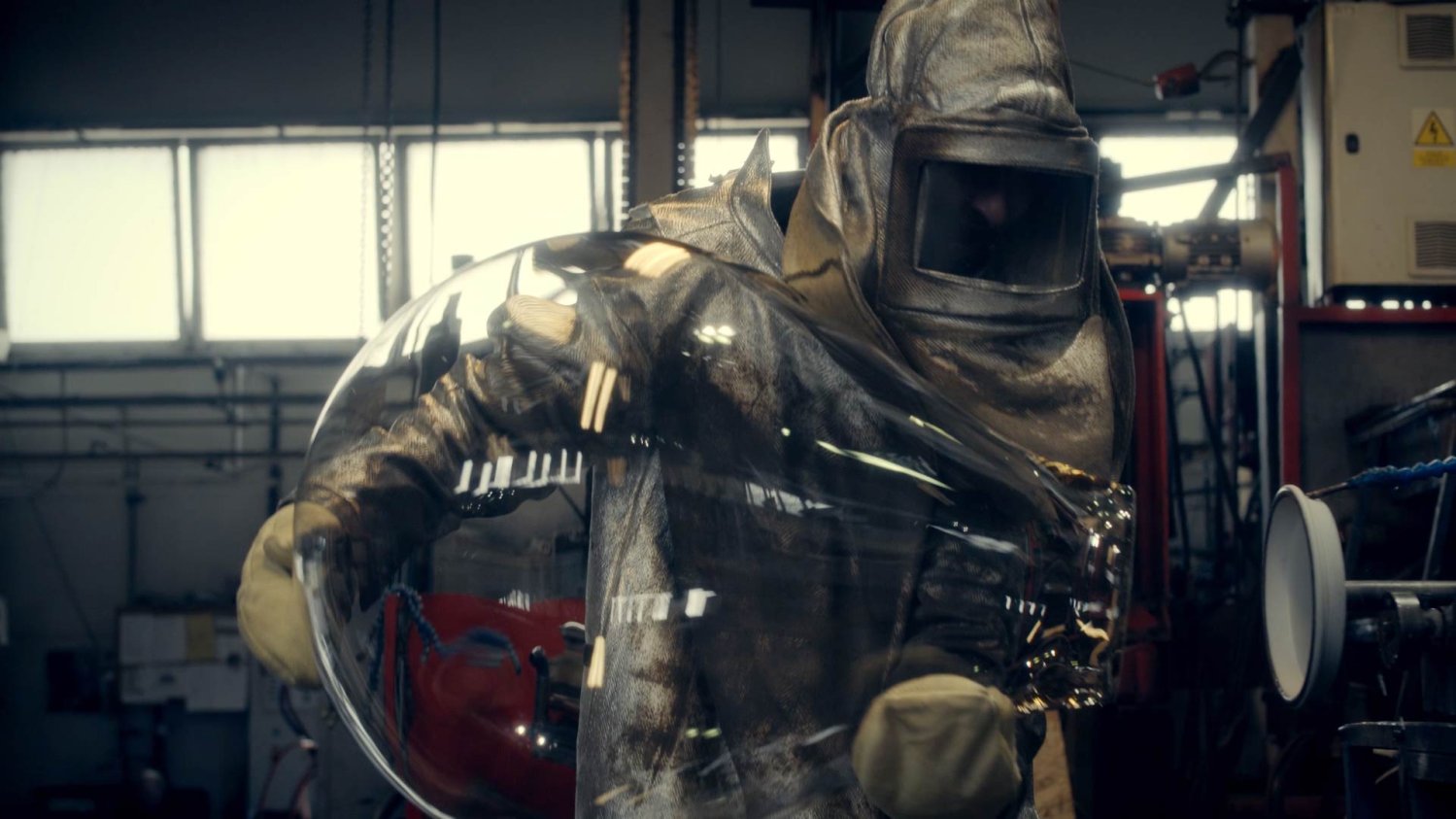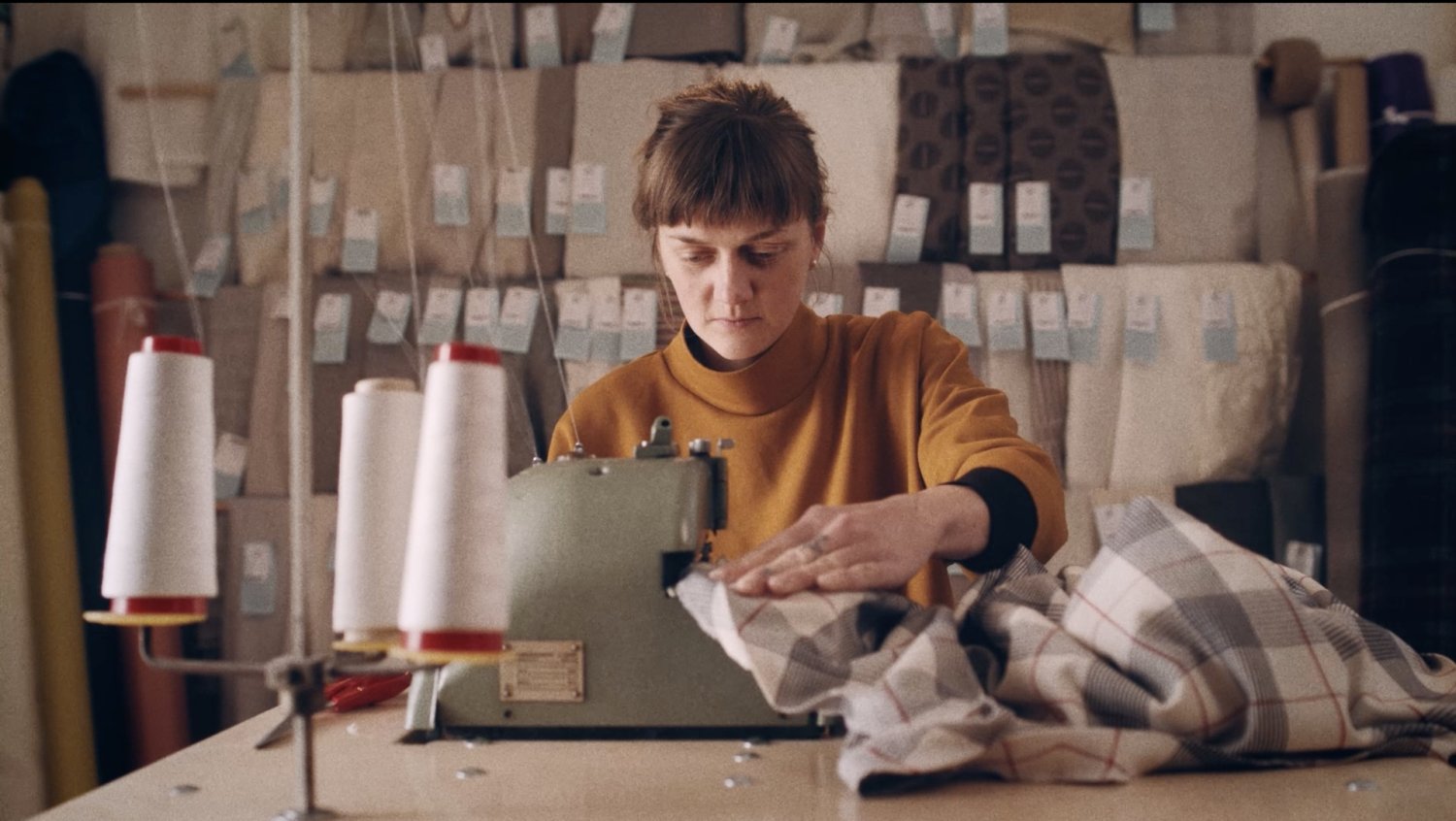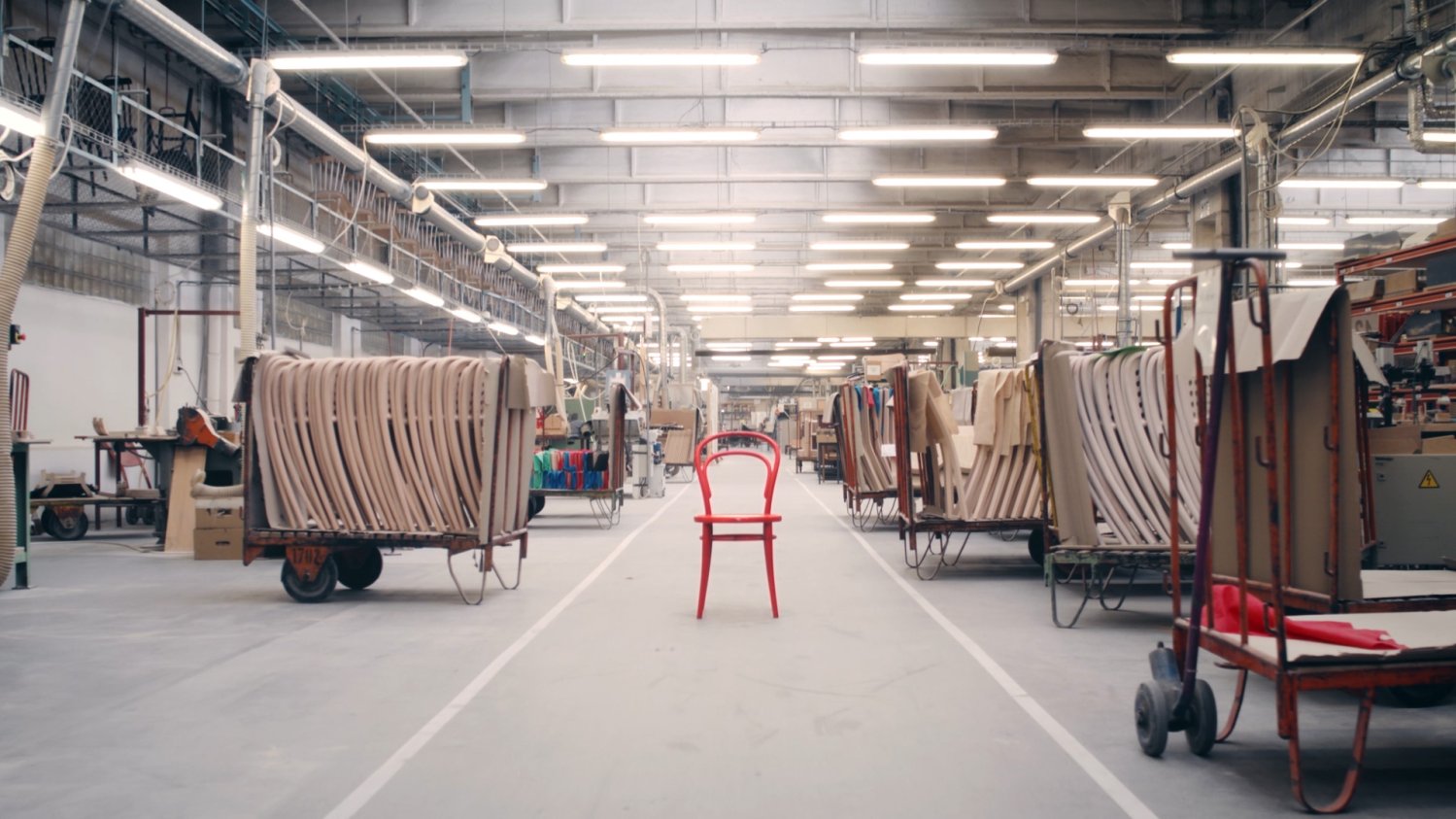About individual films
The films combine animation and real footage of the companies' operations. In this way, they not only illustrate the production and history of the companies but also represent an integral part of the exhibition and represent the thriving field of Czech animation. They focus on six companies:
TON (directed by. Barbora Halířová)
In Bystřice pod Hostýnem, wood for furniture has been bent since 1861 and every single chair made goes through many pairs of hands before it reaches the arms of a satisfied owner, where it often lasts for generations. The film uses many types of animation such as stop-motion, flat, object, replacement, and 2D digital animation. It uses small models of the No. 14 chairs and scanned originals of the earliest photographs of factory employees.
Bomma (directed by. Magdalena Hejzlarová)
Combining the tradition of handmade work with incredible machine precision. The reflection and animation of light play out in the morphology of the BOMMA luminaires. The film works exclusively with the Bomma luminaires themselves and with reflections of light. Everything is created by post-cinematic animation in front of the camera.
Lasvit (directed by. Thanh Mai Tranová)
From inspiration to final product. A journey through microcosm and macrocosm, from birth to death. The film reveals the birth of a product from a grain of sand. The film works with time-lapse techniques, animation of real materials under the camera, 3D animation, and glitches.
Textile Mountain (directed by. Diana Cam Van Nguyen)
Behind every textile, there is a story and a piece of history. To prevent them from ending up in a landfill or incinerator, Lenka Vackova's Textile Mountain project helps to breathe new life into textiles. The fabrics and beads, all of which come from Textile Mountain, play a significant role in the film. Lenka Vacková provided several archival materials for the film, which came to her attention along with the stories of the fabrics. It was not easy to choose just two examples out of the many that appear in the film. The origins of the fabrics are varied and each deserves to appear in the film.
Škoda Auto (directed by. Zdeněk Durdil)
The car is an organism that man creates and nurtures. The machine comes to life and carries its creators through time and around the world in a whirlwind of evolution in forms and morphology. For the film, real cars from the Škoda Museum in Mladá Boleslav (MBX, OHC) were animated; the filmmakers obtained great materials from the Škoda archives.
Prusa 3D (directed by. Ondřej Slavík)
A machine that works relentlessly, needs no rest and pushes the boundaries of various disciplines. The 3D printer replicates itself, getting better, more powerful, and more accurate. The film uses prints that were created on PRUSA 3D printers. The film also works with a printer that allows multi-colour printing. The abstract parts of the film consist of, for example, the fills of the prints and their animations.





